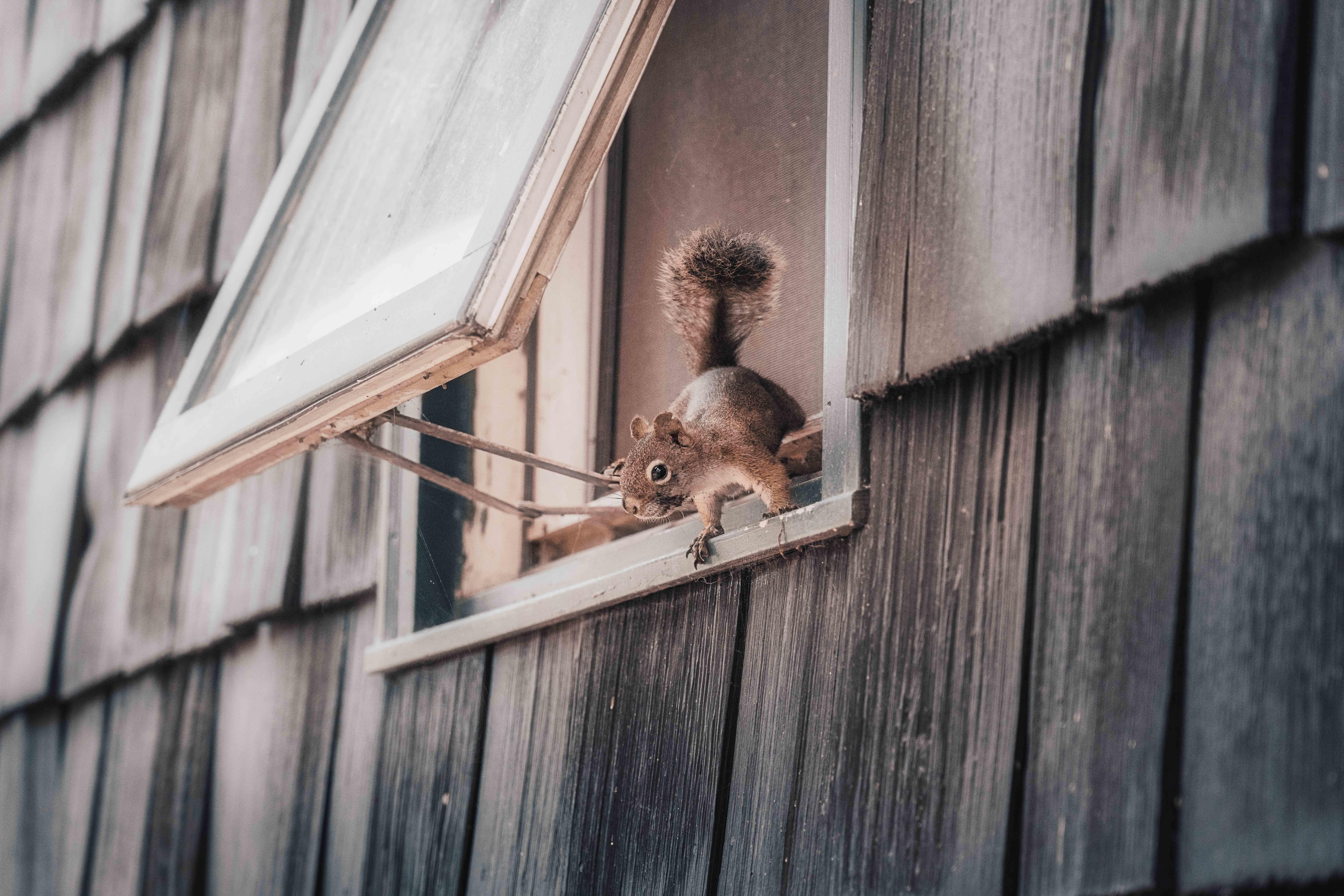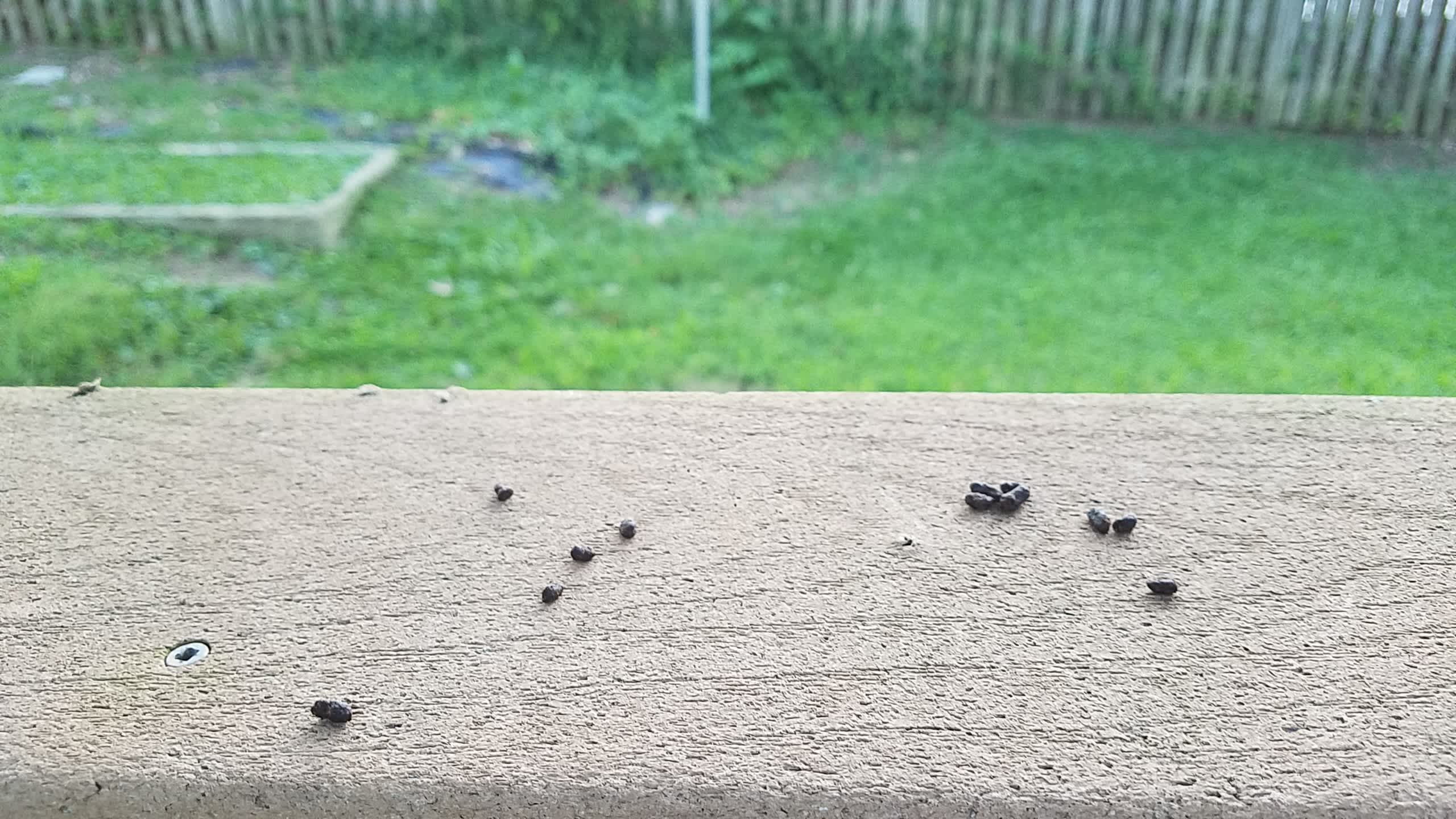
Whether you have bugs, bats, or rodents invading your home, you’ll want to contact an exterminator quickly. Find out how much pest control costs in Columbus, OH.
Crack the code on which pest left the mess


Rat poop is smaller and darker than squirrel droppings but more dangerous.
Squirrel poop is found near higher points in the home, such as the attic.
Dropping shape and texture can also offer clues about the pest’s identity.
Rat poop carries more serious diseases, including hantavirus and leptospirosis.
Prevention for repeated infestation starts with the right identification.
So, you found poop. Somewhere you really didn’t want to—maybe the attic, maybe behind the fridge—and now you’re trying to figure out who left it. Was it a squirrel just looking for a cozy spot or rats setting up camp in the kitchen? Before you panic, there are some surprisingly specific ways to tell the difference between squirrel poop and rat poop, which will help you to know what you're up against and how to deal with it.
Overall, squirrel poop is often larger and lighter, and rat poop looks more like a sausage as opposed to squirrel poop’s bean-like shape. Here are the key elements to look out for when you’re trying to determine if those droppings were left by a squirrel or a rat.
| Type of Difference | Squirrels | Rats |
|---|---|---|
| Size | About 3/8 inch long | 1/4 inch (or sometimes up to 1/2 inch) |
| Color | Dark brown to black but lightens over time | Dark brown to black |
| Shape | Uniform with a slight curve, bean-shaped | Blunt-edged with a sausage shape, can be rounded or more pointed |
| Texture | Firm but more crumbly | Dense and solid |
| Amount | Fewer pellets but still prolific | Up to 50 droppings a day, scattered |
| Location | Found near entry points and higher, dry places | Basements, crawl spaces, behind appliances, attics |
| Disease | Leptospirosis and ringworm | Hantavirus, leptospirosis, salmonella, and rat-bite fever |

Squirrel and rat droppings look similar if you're not used to seeing either one. They're both small, dark, and pellet-shaped, which makes it easy to confuse the two. But when you look closer, you’ll start to see some clear tells that point to who left the mess.
Squirrel droppings are often larger, averaging 3/8 of an inch long. Rat poop is a bit smaller on average at 1/4 inch (though it can reach up to 1/2 inch). Size alone won’t confirm the culprit, but it’s one of the first clues that can help you narrow it down.
Fresh squirrel droppings often appear dark brown or black. Over time, it dries out and lightens to a brown or off-white color. Rat poop is also dark brown to black right from the start, and it stays that way.
Squirrel droppings are more uniform in shape with rounded ends and sometimes curve slightly, almost like a tiny coffee bean.
Rat droppings are sausage-shaped, but they do differ slightly by species. For example, Norway (street) rat droppings feature more rounded, tapered ends, while roof rat droppings are pointier.
Nobody likes getting up close and personal to poop, but texture can be telling. Rat poop is denser due to their varied, omnivorous diet.
Squirrel droppings, while still firm, can crumble more easily, especially as their diet is mostly plant-based. In other words, if it falls apart with a little pressure, it might be a squirrel, not a rat. (Make sure you wear the appropriate protection when handling, or better yet, leave this part of identification to an extermination pro.)
Rats are very prolific poopers, leaving up to 50 droppings per day. If you’re seeing little black dots everywhere, especially along baseboards or near food, that’s probably a rat issue.
Squirrels poop less frequently, but when they do, they often return to the same spot, which means their droppings may pile up rather than scatter.
Location matters just as much as the droppings themselves. Squirrel poop is found near their entry points—for example, attic vents or chimney flues. They like higher, drier spaces.
Rats, especially Norway rats, stick close to ground level, leaving droppings in basements, crawl spaces, or behind appliances. Roof rats, on the other hand, do head to attics, so if you’re seeing dark droppings upstairs, you’ll need to consider both possibilities.
Rats carry serious diseases like hantavirus, leptospirosis, salmonella, and rat-bite fever, all of which can be transmitted through their feces. Inhaling dust from dried rat droppings is especially risky in enclosed spaces.
Squirrel droppings are less likely to carry these diseases, but they’re not risk-free. Squirrels can carry leptospirosis and ringworm, and if they’ve been around raccoons or other wildlife, they can cross-contaminate areas.
DIY pest control can work, especially if you’ve correctly ID’d the intruder and caught it early. You can patch holes, set traps, and sanitize the area without dropping a ton of cash. However, if you miss even one entry point or underestimate how many critters you’re dealing with, you’re basically inviting them right back in. Regardless of the pest, cleanup should always involve gloves, masks, and disinfectants. If you need help identifying the pest or help with cleanup, contact an extermination company in your area.
Exterminators know exactly where to look, what kind of traps to use, and how to safely remove feces without stirring up hazardous dust. They can also tell if you’re dealing with a solo scout or a full-on rat or squirrel infestation. The up-front investment could save you from multiple rounds of guesswork, chewed wires, and contaminated insulation.
From average costs to expert advice, get all the answers you need to get your job done.

Whether you have bugs, bats, or rodents invading your home, you’ll want to contact an exterminator quickly. Find out how much pest control costs in Columbus, OH.

If you have a serious rodent problem, you may need to know the cost of hiring a rat exterminator. We can help you estimate prices and control costs.

Find out how much it costs to remove armadillos and stop them from coming back. Know how much to budget to humanely remove these pesky critters from your yard.

Learn the most common signs of carpenter ants and where to look for them in the house. We cover costs to remove them and prevention methods in our detailed guide.

Learn the 12 signs of termites to determine if your home has a termite infestation. Identify the signs early to prevent damage and reduce extermination costs.

Bed bugs are infamous for sticking around. Calling a bed bug removal pro is the best way to solve this problem for good: Here’s who to contact.